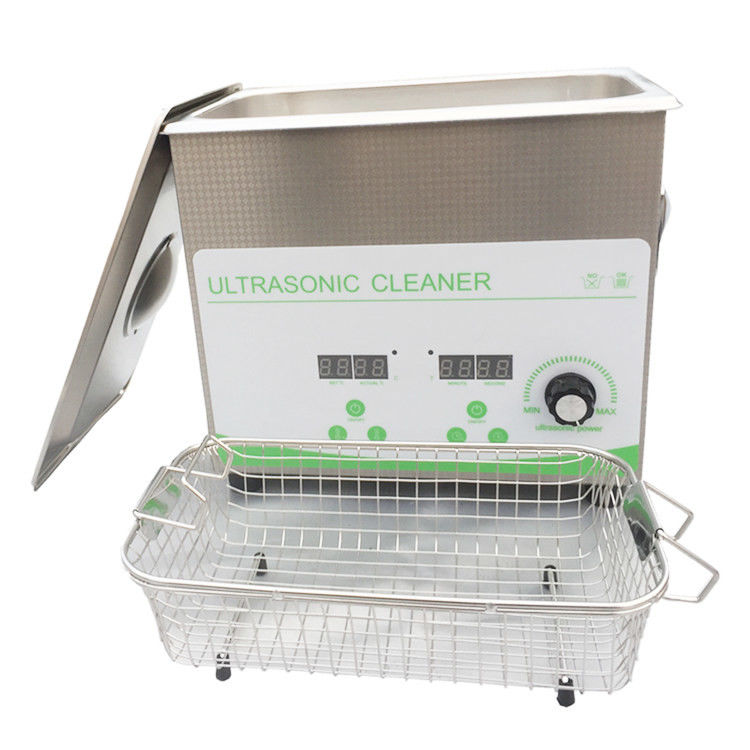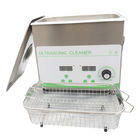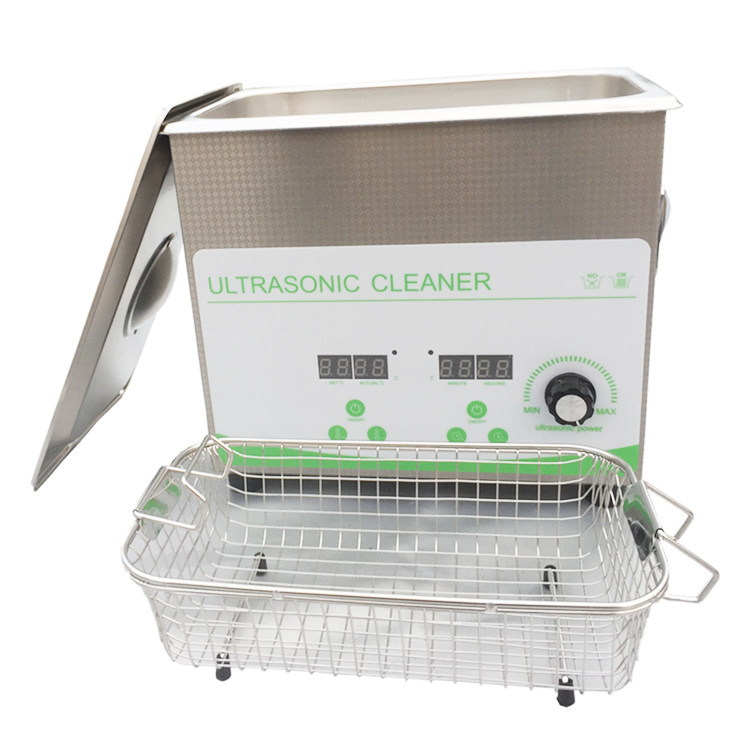Relays & Motors & Switches Ultrasonic Washer Machine Power Adjustable 5L
Ultrasonic Cleaners are used in various industries from Automotive to Electronics to Medical facilities for a number of applications. Some of the Ultrasonic Cleaning applications are:
Ultrasonic Cleaners in Industrial Manufacturing:
- Assemblies
- Gears
- Metal & Plastic Parts
- Precision Bearings
- Relays & Motors
- Switches
Specifications:
| Model |
Tank size |
Unit size |
Volume |
Actual ultrasonic power |
Rated ultrasonic power |
Ultrasonic frequency |
Heating power |
Timer |
Heating temperature |
| LxWxH(mm) |
LxWxH(mm) |
(L) |
(W) |
(W) |
(kHz) |
(W) |
(MIN) |
(℃) |
| TB-30 |
150x85x65 |
175x110x125 |
0.8 |
30 |
30 |
40 |
No |
1-30 |
NO |
| TC-50 |
150x135×100 |
175x160x210 |
2 |
50 |
60 |
40 |
150 |
1-30 |
0-80 |
| TC-100 |
240x135x100 |
265x165x220 |
3.2 |
100 |
120 |
150 |
| TC-150A |
300x150x100 |
325x180x225 |
4.5 |
150 |
180 |
300 |
| TC-150B |
300x150x150 |
325x180x280 |
6.5 |
150 |
180 |
300 |
| TC-200 |
300x240x150 |
325x265x280 |
10.8 |
200 |
240 |
450 |
| TC-300 |
330x300x150 |
360x325x285 |
15 |
300 |
360 |
450 |
| TC-400 |
500x300x150 |
530x325×285 |
22 |
400 |
480 |
600 |
| TC-500 |
500x300x200 |
530x325x325 |
30 |
500 |
600 |
600 |
Ultrasonic cleaner for Superior Parts Cleaning
1. Sweep frequency: Continuous slight variation of ultrasonic frequency to eliminate hot spots, dead zones, and standing waves.
Benefit: Provides uniform and thorough cleaning. Prevents damage to electronic components.
2. Heater: Thermostatically adjustable heater.
Benefit: Improves cleaning effectiveness; required for removal of grease and oil.
3. Normal mode: Operates at fixed ultrasonic frequency.
Benefit: Aids in mixing, dissolving, and dispersing samples.
4. Digital display: Displays operating parameters.
Benefit: Enables quick and easy monitoring of process status and resetting of precise operating conditions.
Frequently Asked Questions
Ultrasonic Cleaners – Technology:
What is cavitation?
Cavitation is the rapid formation and collapse of millions of tiny bubbles (or cavities) in a liquid. Cavitation is produced by the alternating high and low pressure waves generated by high frequency (ultrasonic) sound. During the low pressure phase, these bubbles grow from microscopic size until, during the high pressure phase, they are compressed and implode.
What is degassing, and why should it be done?
Degassing is the initial removal of gases present in the solution. Useful cavitation occurs after gasses have been removed from the cleaning solution, leaving a vacuum in the formed bubble. When the high pressure wave hits the bubble wall, the bubble collapses; it is the energy released by this collapse that will assist a detergent in breaking the bonds between parts and their soils.
How do I get the best ultrasonic cleaning?
There are many considerations important to ultrasonic cleaning. Optimizing these variables will produce the best cleaning. The most important decisions to be made are choosing the proper cleaning solution, cleaning at the right temperature for the correct amount of time, and choosing the right size and type of ultrasonic cleaner.
Can ultrasonic cleaning damage my parts?
With certain cautions, ultrasonic cleaning is considered safe for most parts. While the effects of thousands of implosions per second is very powerful, the cleaning process is safe since the energy is localized at the microscopic level. The most important cautionary consideration is the choice of cleaning solution. Potentially adverse effects of the detergent on the material being cleaned will be enhanced by the ultrasonics. Ultrasonic cleaning is not recommended for the following gemstones: opal, pearl, emerald, tanzanite, malachite, turquoise, lapis and coral.
What is direct and indirect cleaning?
Direct cleaning occurs when the parts are cleaned in a cleaning solution which fills the cleaner, usually inside a perforated tray or mesh basket. The limitation of direct cleaning is that a solution must be chosen that will not damage the ultrasonic cleaner. Indirect cleaning involves placing the parts to be cleaned in an inner non-perforated tray or beaker that often contains a solution that the user may not want directly filling the ultrasonic tank. When choosing indirect cleaning, make sure that the water level inside the tank itself is maintained to the fill line (about 1″ from the tank top) at all times.
Why is a special solution required for cleaning?
Soils adhere to the parts… if they didn’t, the soil would just fall off the parts! The purpose of the solution is to break the bonds between parts and their soils. Water alone has no cleaning properties. The primary purpose of the ultrasonic activity (cavitation) is to assist the solution in doing its job. An ultrasonic cleaning solution contains various ingredients designed to optimize the ultrasonic cleaning process. For example, increased cavitation levels result from reduced fluid surface tension. An ultrasonic solution will contain a good wetting agent or surfactant.


 Your message must be between 20-3,000 characters!
Your message must be between 20-3,000 characters! Please check your E-mail!
Please check your E-mail!  Your message must be between 20-3,000 characters!
Your message must be between 20-3,000 characters! Please check your E-mail!
Please check your E-mail! 


